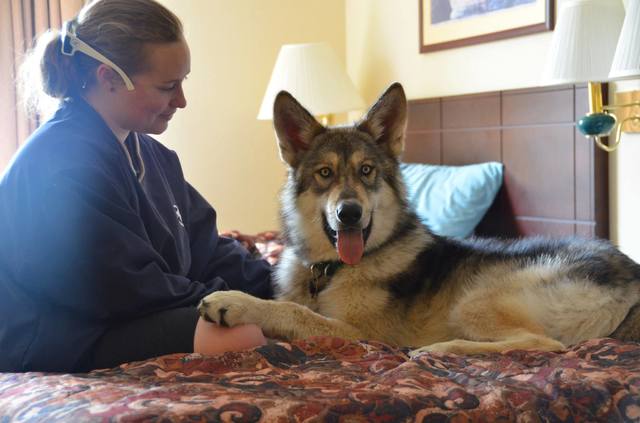ALASKAN NOBLE COMPANION DOG
Odpiram novo temo te zeelo redke pasme. Pasma izvira iz Amerika, ustvarila jo je Ann Dresselhaus iz Amerike, namen je bil vzrediti pasmo podobno volku a s vsemi karakteristikami in zmožnostmi za delo, reševanje, agility, RO, ovčarstvo...Brez prisotnosti volka v njem, a to še ostaja skrivnost. Vzrditeljica trdi, da v njem ni volka, a so mnogi sumničavi.
Pasma se mi zdi zeelo zanimiva saj bi naj bili te psi izredno inteligentni (poznam par primerkov in lastnikov iz Kanade, ki so vzeli psa pri tej punci). Odnos same vzrediteljice do psov pa zeelo dober.
Pogovarjala sem se z lastnico iz Kanade, njen pes Jarrow je zelo neproblematičen pes, ne trpi za seperativno aneksijo, je povsem ljubezniv, crkljiv, do nje in se razume s vsemi psi. Ima še belgijsko ovčarko, malinojko Onyx in škotskega ovčarja. Tudi s tujimi psi se razume.
Živi skupaj s kokošmi, kozami in konji, nima lovskega nagona.
Njegovi predniki pa terapevtski psi.
Je pa EDIN iz legla, ki je tako nezaupljiv do tujcev, meji na strah, a mi je rekla, da napredujeta tudi v tem.
Uči ga razno razne trikce, vedno ga ima spuščenega, rekla da brez strahu, da bi pobegnil.
Opisala mi je tudi, da je nek dan čreda jelenov letela mimo njega in je pes samo opazoval v sedečem položaju.
Kontaktirala sem vzrediteljico, ki se res spozna na vzrejo, parila je več, pasem, da bi dobila samo pozitivne gene oz. primerke.
Je pa zeelo zanimivo saj bi naj bil pes potomec:
The Alaskan noble companion dog, a very new breed intending for a wolfish look, they use no wolf or wolf dog stock, focusing on German shepherd, malamute and husky foundations, but they also have greyhound, great Pyrenees, Labrador, border collie and even greyhound has been added down the line. The dogs are very wolfy looking, though apparently they only come in black and do look a lot like black GSD's, the GSD influence is quite apparent.
vir
Why the name Alaskan Noble Companion Dog ?
Alaskan: to get the idea across that this is a northern-looking breed (not place of origin).
Noble: because they have noble/regal appearance.
Companion: because that is what they are. In addition, there is another play on words that working dog people will recognize, and that is: When you abbreviate the breed name ANCD or Alaskan Noble CD, the last 2 letters are the abbreviation the AKC uses for it's first formal obedience title, AKC CD (Companion Dog).
STANDARD:
Overview:Both for the individual dog and for a breed (population) as a whole, excessive attention to appearance can have negative consequences. Things can go wrong if we do not take into account the effects "embellishments" can have on the physiology of the animal. It is a human propensity to beautify still more what is beautiful already. Rounded becomes dome-shaped, short becomes too short and wide becomes broader still. Some breeds have such enormous pelts that the hair covers the head so richly that the dog is unable to see. Exaggeration lurks. With this in mind, we approach the Alaskan Noble Companion Dog's conformation very generally in the early evolution of this breed, striving to leave the observer with a gestalt rather than great detail.
Temperament:
The Alaskan Noble Companion Dog is an eclectic breed and the ultimate generalist. The ideal dog is capable of almost any kind of work including herding, carting, agility, obedience, lure coursing, tracking, mushing, therapy dog work, and some Schutzhund events. Individual dogs will excel in various areas, but the breed as a whole is capable of producing competitors in any of these areas. This is a low maintenance breed in the sense that it is robust and long-lived, but higher maintenance in the sense that it has an active mind and body that prefer to be occupied with problems to solve and experiencing life to the fullest which includes a keen observation style.
This breed is a good companion indoors and out. The adult is not so high energy that it is bouncing off the walls of the house when left alone, but seldom is a 'couch potato' until well into old age (its later teen years). He is capable of being an 'alert' dog that knows when something is worth paying attention to by directing your attention via voice and body posture. He is friendly enough to get along casually with other dogs. Attempting to bite another dog is a disqualification.
Individuals of the breed may be somewhat aloof to strangers, but not apprehensive, standing their ground and showing confidence to meet overtures without themselves making them, while others may be openly extroverted to all strangers. They should be observant and vigilant of new situations and people, not switching loyalties easily yet all must be capable of eventually warming up to a friendly stranger.
Individuals must be approachable by the judge in order to successfully observe the teeth and to determine testicle descent. Attempting to bite the judge is a disqualification. A dog shrinking behind its master or handler while being approached by the judge is a fault. Tucking of tail tightly under the body while being examined by the judge is a fault.
Conformation:
The ideal Alaskan Noble Companion Dog is between 26" and 33" tall and weighs 60-110 pounds. The females may be much smaller than the males occupying the lower end of the weight and height spectrum, however large height and weight in females is not considered a fault.
The ideal eye color is yellow, green, grey, or blue with amber (or gold) being common. The lighter the eye color the better, with dark brown eyes being considered a minor fault. Symmetry is desirable in eye color and if the 2 eyes are different colors or if one eye is bi-colored, it is considered a minor fault.
The body color should be as gradually blended as possible giving a natural progression from one color to the next with a minimum of sharp transitions. Obvious masks which give the appearance of other breeds such as an Alaskan Malamute or Siberian Husky are faults. Pinto markings (large spots) and white tail tip markings are faults. White markings on the feet or chest are to be minimized. All colors including solid colors, dilute colors, and white are acceptable with multiple-banded fur being very common giving the appearance of many color hues in the same dog.
A tightly curled tail as in an Akita or an Alaskan Malamute is a fault. The tail curvature is to be minimized.
Coat ranges in length from that of a typical German Shepherd to that of a longer-haired Alaskan Malamute with the ideal lying somewhere in-between. The ideal coat length and thickness, achieved by a thick seasonal undercoat beneath coarse guard hairs, does not require daily brushing, yet is long enough and thick enough to withstand the coldest North American winters in the dog's prime. When in full coat, a substantial neck and cheek ruff should be visible. The neck and cheek ruffs should be maximized. Curly hair is a fault. Slightly wavy hair is a minor fault.
Ears range in size from that of a typical Belgian Shepherd to that of an Alaskan Malamute. Floppy ears are a major fault. Inside ear hair should be maximized although lack of abundant hair in ears is not a fault. Overly large ears in proportion to the head on the adult dog, like that of a German Shepherd is a minor fault.
Bite should be a scissors with an even bite being a minor fault. Underbite or other obvious bite abnormalities are major faults. Lack of 2 descended testicles in a male is a disqualification.
Front legs should appear close together from the front compared to most other breeds, similar to the larger Sight Hounds. The dogs should move effortlessly, single tracking while moving at a trot, appearing as if the body is suspended in the air from above like a marionette.
Solid color nose leather is desirable. Black is preferred to pastels. Distinct spots on the nose are a fault.
Feet size should be maximized within reason and should appear bigger than the connecting leg width. Rear dew claws are a minor fault. Nail color should be either darker or the same color as surrounding hair color. Lighter nails than surrounding hair color is a minor fault.
More on conformation TBD.
Breeding Disqualifications:
Lack of ability to achieve the AKC CGC temperament status recorded with AKC.
Lack of OFA Good or Excellent hip status recorded with OFA.
Lack of a CERF Pass eye status recorded with CERF.
Lack of 2 descended testicles in a male.
Severe underbite, severe overbite, wry jaw, or sideways-protruding teeth.
Any obvious skeleton deformities.
Obvious ectropion or entropion.
Revised 03/05
Copyright A. Dresselhaus
FOTO:
http://alaskannoblecd.weebly.com/breed-standard.html



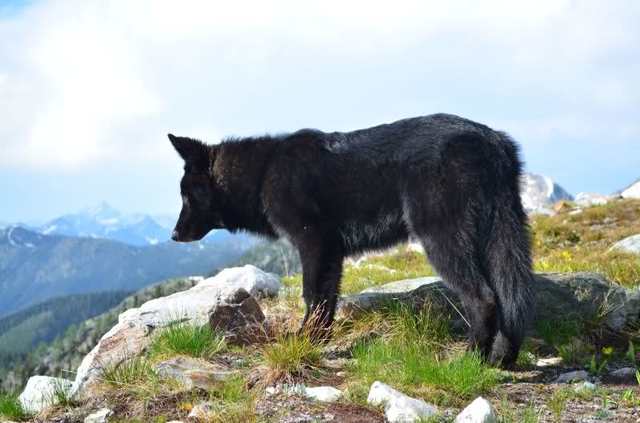




image url upload



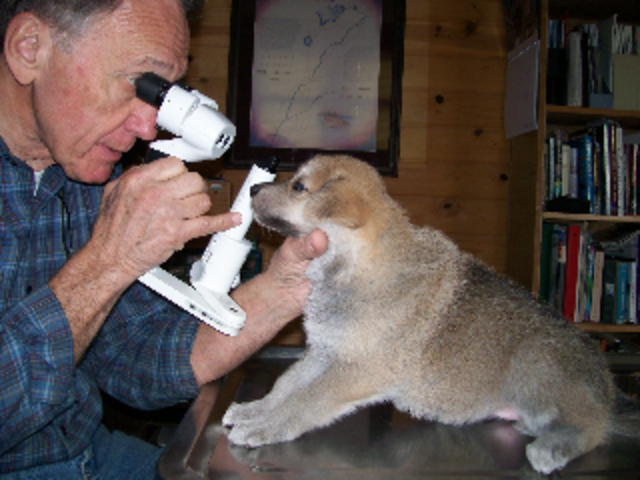

screen cap
https://www.facebook.com/AlaskanNobleCompanion
Zanimiva mi je pestrosrt prednikov te pasme, in kaj vse se z genetiko lahko doseže.


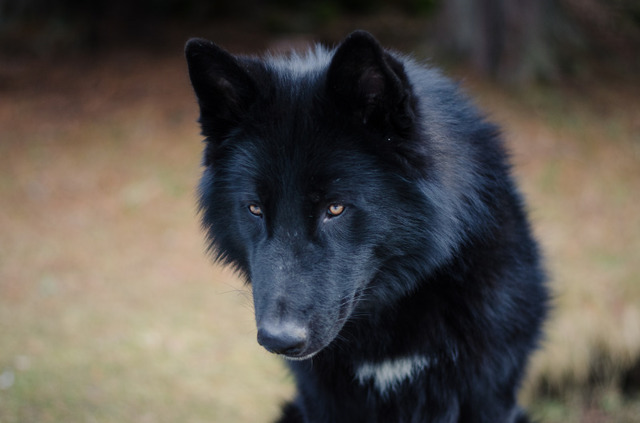


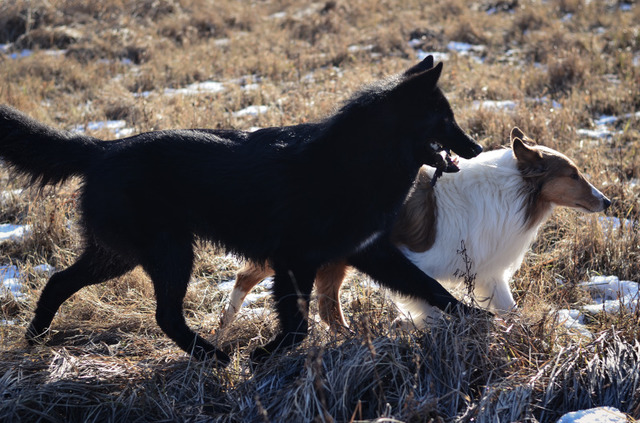


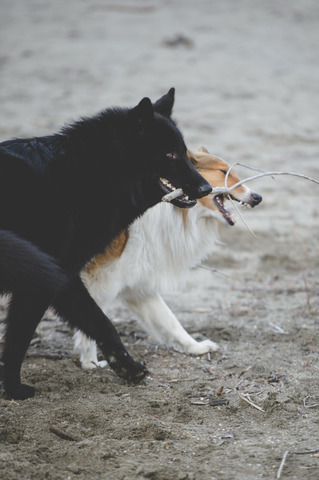
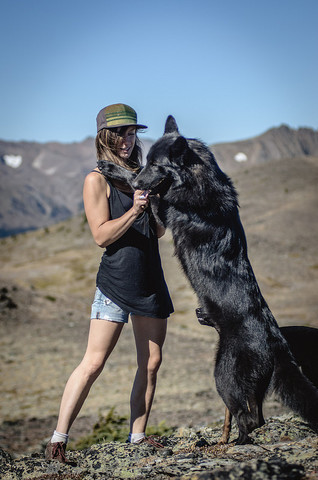


picture upload
vir
http://www.tamaskan-forum.com/viewtopic.php?f=22&t=2858&start=400





 BRAVO!
BRAVO!

